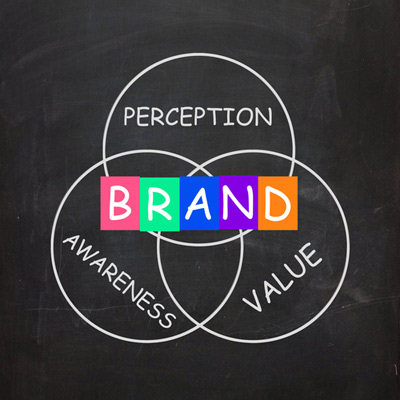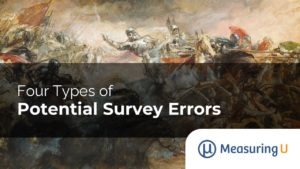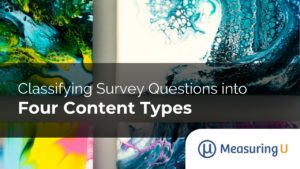 There’s more to measuring a brand than just asking if people like it.
There’s more to measuring a brand than just asking if people like it.
Customers generally progress through stages when forming relationships with brands.
This is often called the hierarchy of effects. While different models describe the hierarchy of effects, in general, customers go from familiarity to consideration and finally to long-term usage and loyalty.
Customers’ attitudes toward a brand help explain buying habits, loyalty and even revenue. So you’ll want to measure brand attitudes at each stage. It’s something I cover in detail in Customer Analytics For Dummies.
You can collect a lot of this data using a survey targeted to specific respondents. Here’s how to structure your branding survey that we’ve found works well.
For some questions, you’ll benefit from using survey software that supports logic and conditioning (e.g. MUIQ, SurveyAnalytics, Qualtrics). This allows you to tailor the survey according to how participants answer a previous question or questions. That way, you’re not asking them to respond to brands they’re not familiar with.
Screening
Ask qualifying questions to both screen and segment your responses. Nothing invalidates a branding survey faster than asking the right questions to the wrong mix of people.
Some examples of screening questions are
- Have you purchased a car in the last 6 months?
- Have you booked an airline ticket online in the last year?
You can also ask key demographic questions (e.g. gender, age, income). If you’re not interested in screening on demographic variables, consider asking these questions at the end of your survey. You’ll want to do everything you can to keep survey drop-out rates low and survey length is one of the biggest predictors of drop-out. Demographic questions are generally easy to answer and may help response rates so place them at the end when participant fatigue is at its highest.
Unaided Branding
Without prompting your survey participants with any brand names, ask them to list products or brands that come to mind for whatever product or service area you’re surveying. For example:
- When thinking about laptop computers, which brands come to mind?
- What car rental companies can you think of?
Aided Branding
Ask participants to select the brands they’re familiar with among a list of alternatives. Be sure to randomize the order or responses. For example:
Which of the following hotel booking websites are you familiar with?
- Orbitz.com
- Hotels.com
- Blozert.com
- Expedia.com
Consider adding some distractor brands (brands that don’t belong in the category) as well. They help you gauge how accurate your participants’ responses are compared to random guesses or false memories of a brand due to your suggestion. For example, in the list above, Blozert.com isn’t a hotel booking site. I just made it up. If 10% of your participants select this distractor, you can assume that same percentage randomly selected one of the real websites, too. That is, if 60% selected Orbitz, then you can infer around 10% of participants selected it simply because it was an option.
Brand Favorability
For brands that participants select as being familiar with, ask them to rate their attitude on a scale from unfavorable to favorable. You can use a more sophisticated scale; if your company has its own scale, use it so you can compare your responses to historical data. The point is to capture their top-of-mind attitude about the overall brand.
Brand Affinity
For a specific brand, have participants provide the words or concepts that come to mind when thinking about a brand or product. Start with an unaided question (have them provide open comments) and then move to an aided question (selecting from a set of positive and negative terms).
For the aided question, we’ll usually provide participants a list of 20 or so adjectives, about evenly balanced between positive and negative, and ask participants to select only a subset (e.g. 4 or 5).
Likelihood to Recommend
To gauge customer loyalty, ask customers how likely they are to recommend the brand to a friend or colleague. Use the 11-point scale to correlate it to the Net Promoter Score. You can then compare your score against industry benchmarks. If your company relies heavily on NPS data, like many do, then plan on having your own dedicated NPS survey where it’s kept to a minimum number of questions with the Likelihood to Recommend question asked first.
Specific Product Knowledge
As soon as you have high level branding data on your product and competitors, you’ll likely want to know what’s driving those attitudes. One of the best ways to find out is to dig deeper into the product category. Ask participants to list the features or attributes that distinguish a product from the competition’s or from other categories. Start with an unaided question (open comments) and then move to an aided question (listing features to select from).
Product Satisfaction
Have participants rate how satisfied they are using the key attributes about a product (for example, quality, value, or features). This data can be used to understand how much of brand satisfaction is driven by the product experience. You can use just about any type of scale (I prefer a simple 7 point scale) but if your company uses something else, stick with it.
Because customer satisfaction is such a fundamental measure for gauging your company’s performance with your customers, a number of firms offer a standardized set of satisfaction questionnaires and reports to allow you to compare your satisfaction scores with those of your competitors and industry.
Future Intent
Ask participants which product or brand they intend to purchase or use in the future. Future intent is a key measure of customer loyalty. Understanding future intent also allows you to build a repurchase matrix to estimate what percent of customers will stay with your brand or purchase with another company.
Ending Question
End your survey with a general open-ended question about the study or brand in general. This is your final opportunity to collect any feedback, ideas or attitudes your participants have.
Summary
You don’t have to use all sections outlined here, but in my experience, having a framework helps get you from planning to data collection faster. And then you can do something about what you find!


